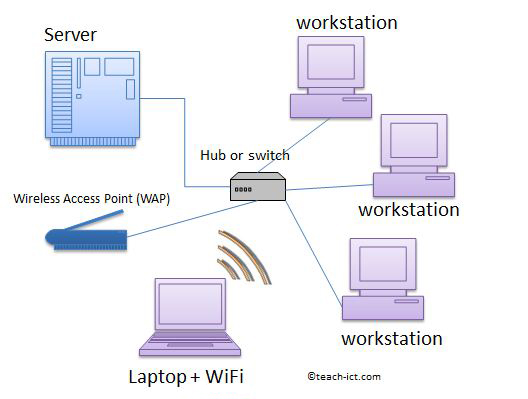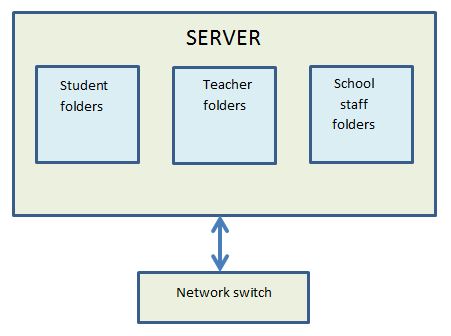2. Client-Server LAN
The network arrangement for a client-server local area network is shown below.

In a Client-Server LAN arrangement, most files and data are stored on a server. All computers on the network connect to this server through a central hub or switch.
The other computers on the network are called 'workstations' or 'clients'.
Users can access files and data from the server using any workstation. They just need to log into their account using their username and password. These accounts are managed by the server. Once they log in, they will see their work area or 'desktop' appear on the workstation screen.
Workstations cannot normally 'see' or share data with each other directly over the network. If people need to share data then a 'shared network folder' is created on the server by the network manager in order to share files.
There may be multiple shared folders on a server with different access rights.
For example, in a school network there will be a shared folder for students where your teacher will store files and resources that you need. There will be another shared folder for office staff, perhaps containing copies of letters sent to parents and other adminstrative documents. All students can see the student shared folder but not the office shared folder. And likewise the office staff can see their shared folder but not the student one.
This is because when your account and login are set up by the network manager you will be given permission to view and use only certain folders.
A typical arrangement is shown below:
Users will have their own private area on the network where they can save their files and documents. No one else can access this area (except the network manager and staff).
A client server network requires a specialist network operating system.
As files are stored on the server and they can be backed up centrally.

